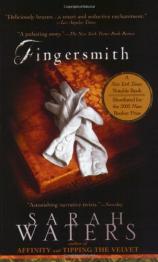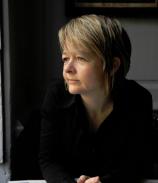Reading Group Guide
Discussion Questions
Fingersmith

1. At the start of her story, Sue Trinder claims: "I was Mrs. Sucksby's child, if I was anyone's." Is this true? Why or why not? Might she still make the same claim by the end of her saga?
2. "Everything that came into our kitchen looking like one sort of thing, was made to leave it again looking quite another," Sue says of Mrs. Sucksby's kitchen (p.10). At Briar, she finds unbearable "two-facedness" on the part of the servants, "all on the dodge in one way or another." (p.83) Compare and contrast the two households. In what ways does each reinforce the activities of its inhabitants?
3. Deceptive appearances are a recurring theme throughout the novel. Is anything about Maud what it seems to be? What about Gentleman? Mr. Lilly? Why do you think the author chose to come at the story twice, from two separate points of view? Is Sue's perception of the situation more or less "real" than Maud's? Why or why not?
4. Sue and Maud initially appear to be almost perfect opposites: where Sue's hands are toughened by work, Maud's are smooth and childlike; where Sue is illiterate, Maud does nothing but pore over books. In what ways do the scale and nature of their differences change as the novel progresses? In what ways have they grown alike by the end of their story? How are they different?
5. Sue and Maud's relationship progresses through many incarnations. Discuss the manifestations of their relationship: how do they fulfill and surpass their roles as villain and victim? Servant and master? Caretaker and dependant? How do their transitions alter their destiny?
6. What effect has her occupation in her uncle's library had on Maud's psyche? Is she capable of distinguishing between the content of the books and her own sexuality? What does her brutal treatment of Agnes indicate? How has she evolved by the time she returns to Briar at the end of the novel?
7. Sue's imprisonment in the asylum echoes Maud's incarceration at Lant Street, as well as her earlier situation at Briar. Discuss the ways in which gender and constraint are demonstrated—and challenged—in their respective characters. In what ways is the desire for "rare and sinister liberty" (p. 210) at the heart of both Maud and Sue's actions?
8. Do you think Sue's recollection of her earliest memory ("I remember seeing...how the world was made up: that it had bad Bill Sykeses in it, and good Mr. Ibbses; and Nancys, that might go either way. I thought how glad I was that I was already on the side that Nancy got to at last.—I mean, the good side, with sugar mice in.") would be altered by her experiences? In spite of all the deceptions she has undergone, does she still regard "good" and "bad" so clearly? Why or why not?
9. What does this novel ultimately say about the relationship between morality and love?
Fingersmith
- Publication Date: October 1, 2002
- Paperback: 582 pages
- Publisher: Riverhead Trade
- ISBN-10: 1573229725
- ISBN-13: 9781573229722








